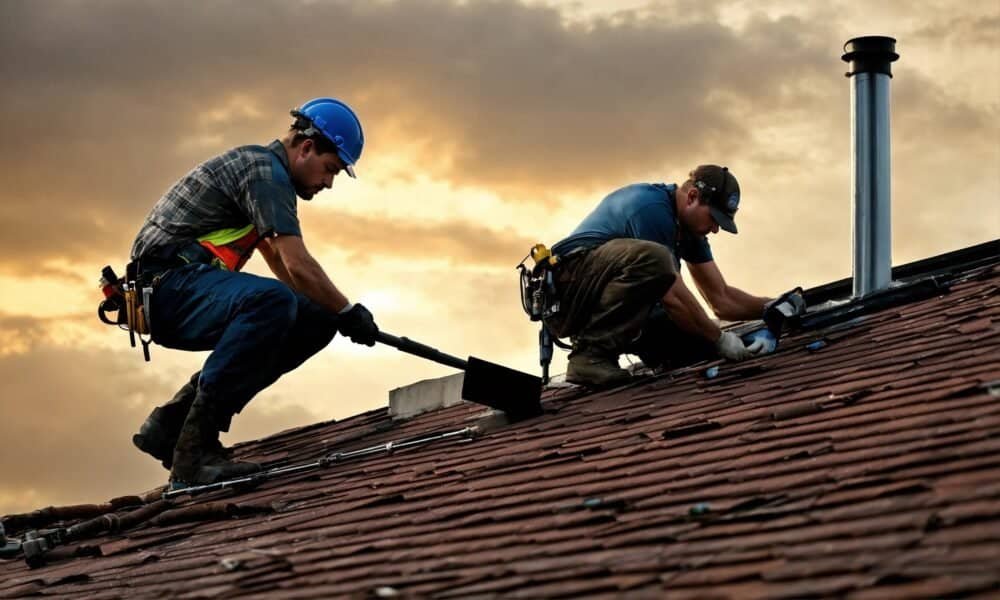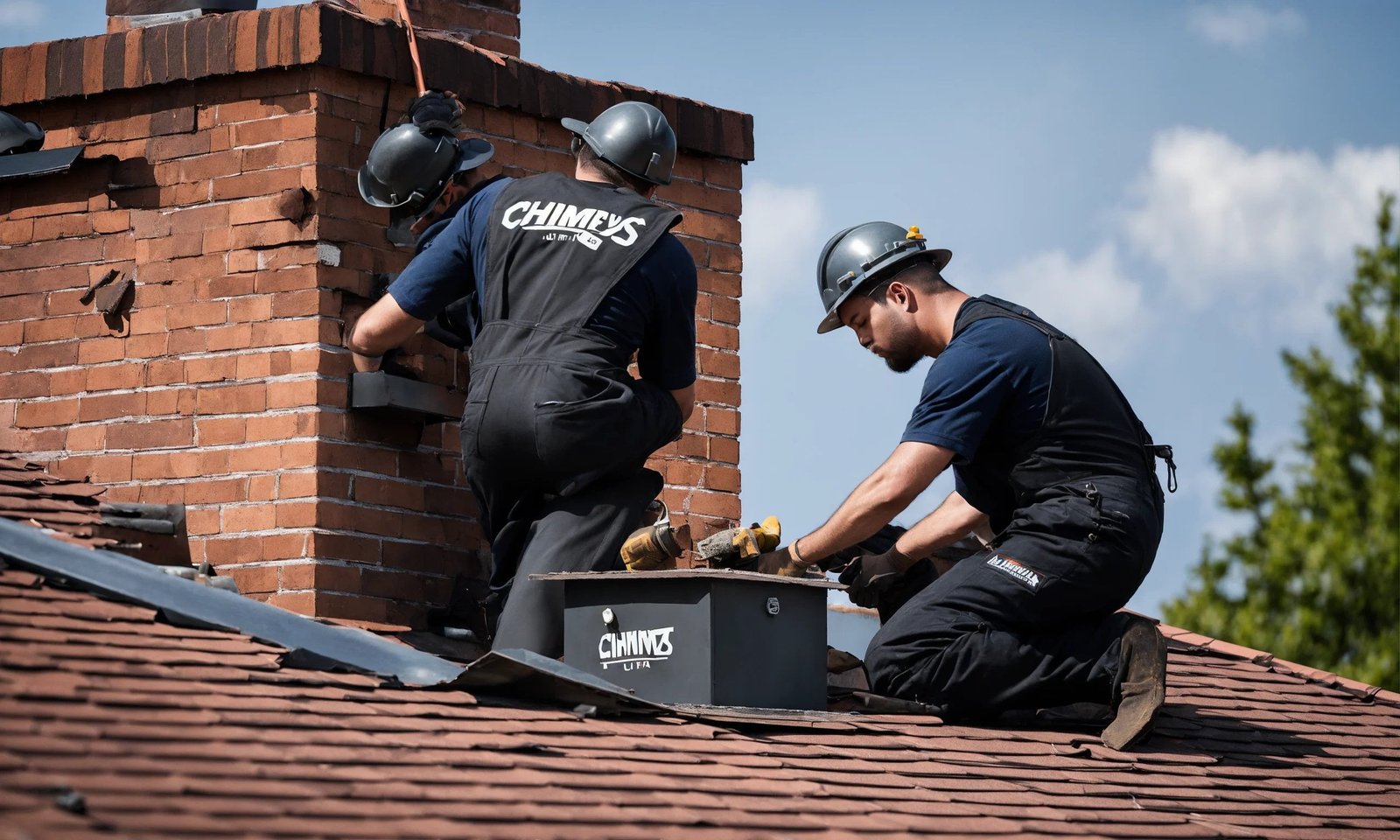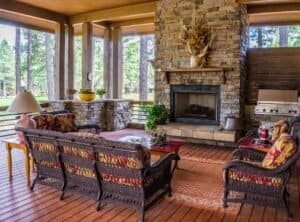Chimneys are a crucial component in many homes. They provide ventilation for gas and wood-burning fireplaces, keeping you and your loved ones safe from harmful gases. However, just like other parts of your home, your chimney requires regular maintenance to operate efficiently. Inadequate maintenance may result in common chimney issues, including leaks, blockages, and creosote buildup.
In this blog, we’ll identify these common problems and equip you with easy-to-follow DIY solutions.

1. Chimney Leaks:
A leaking chimney is a frustrating problem for many homeowners, especially during the colder months when rain and snow are common.
Leaks can occur due to various reasons, including damaged flashing, deteriorating mortar, or a damaged chimney crown. To fix the leak at home:
First step: Locate the source of the roofing leak on your chimney.
Second step: Remove any debris around the area of the leak.
Third step: Use a sealant or tar to patch the hole.
Fourth step: If the flashing is the source of the leak, replace it with a new one.
2. Blockages
A blockage in a chimney can pose serious health hazards to the homeowners, such as carbon monoxide poisoning or chimney fires. Blockages can occur due to various reasons, including debris buildup, bird’s nest, or soot accumulation. To clear a blocked chimney:
Firstly: Inspect the chimney flue to determine the extent of the blockage and nature of the debris.
Secondly: Use a chimney brush to remove debris and buildup within the fireplace flue.
Thirdly: For stubborn blockages, use a pulley system attached to a powerful vacuum to remove soot, debris, and other blockages inside the chimney.
3. Creosote Buildup:
Creosote is a highly flammable material that occurs naturally from the smoke produced by burning wood. Over time, it can accumulate in the flue lining, leading to a dangerous chimney fire. To prevent this issue:
1: Schedule regular chimney maintenance and cleaning
2: Burn seasoned wood for your fireplace.
3: Install a chimney cap, which can prevent debris, rainwater, and animals from entering your chimney flue.
4. Damaged Chimney Damper:
The chimney damper helps to regulate airflow and prevent entry of debris into the chimney. When it’s damaged, it can cause cold drafts in your home, increase energy bills, and allow pests to enter your home. To prevent this issue:
A: Visually inspect the chimney damper to determine the damage.
B: Call a professional and ask for a virtual assessment.
C: If the professional would be able to help you solve it remotly, keep using the chimney carefully. If not, schedule an appointment with the professional to get the damper replaced.
5. Smoke In The House:
If your chimney is not drafting correctly, you may experience smoke and odor issues. This problem can be caused by a blockage, a damaged flue, or poor insulation. To prevent this issue:
A: Check for blockages and clean the chimney.
B: If this doesn’t solve the issue, check the insulation in the flue.
C: If missing or damaged, replace your flue liner to solve this problem.
6. Safety Consideration for DIY Chimney Common Issues Repairs:
Chimney repairs can be dangerous, particularly if you lack experience or knowledge of the task.
Never attempt to perform complex repairs like chimney reconstruction, which requires professional expertise.
Always wear protective gear, including gloves, goggles, and a dust mask to protect yourself from dust and debris.
Conclusion
In conclusion, your chimney may face various problems over time, and as a homeowner, it’s essential to have a basic understanding of these issues.
Follow our easy-to-follow DIY solutions above to fix minor issues, but for more complex problems, consult experienced chimney professionals.
Additionally, ensure you schedule regular chimney maintenance to catch problems early and prevent them from turning into expensive repairs or health hazards.



